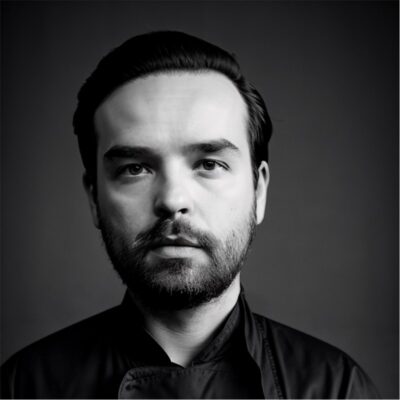
Name: Bryce Michael Edward Stevenson
Location: Mooingwanekaaning-minis (Madeline Island)
Education: Associate of Art in Graphic Design; Bachelor of Art in Indigenous Literature/Creative Writing; Master of Legal Studies in Indigenous Law (current)
Business name: Miijim
Tribal affiliation: Red Cliff Band of Lake Superior Chippewa
What led to your passion for indigenous foods?
Food has always been an issue for me. When my single mom, my four siblings and I were living on the reservation, we always had food; but it was in the form of USDA commodities, partial payment for our forfeited lands. We moved around a lot, so when we weren’t near our community on the reservation, we relied on food banks and friends to help keep our stomachs full. It wasn’t until I was ten years old that I tried my first real eggs, fried in real butter, served with real sausage and real maple syrup. It blew my little mind to pieces, trying these common foods in their true form, as opposed to powdered eggs, vegetable lard, powdered milk, and canned pork.
At that moment I had a realization that real, delicious food exists, along with this incredibly horrific but fascinating history behind why it was so difficult for my family to access those foods. From that point on, I began to look at food from a completely new lens. I began questioning the food I eat, why I eat it, where it came from, and what the results of consuming it would be.
Why do you think it’s important to make traditional foods accessible for Natives?
The most important thing is for someone to discover, realize, and acknowledge who they are and where they’re from. A person can’t develop any kind of understanding around food until they educate and connect themselves with the very food that grows where they live. Indigenous foods and systems are built around accepting the gifts provided for us, without the need to manipulate, import, or taint what we eat with unnecessary efforts. Understand yourself, your land, and your traditions, and you’ll begin to realize the importance of making this knowledge, medicine, and tradition, available for everyone.
What is the importance of an indigenous diet for a healthy lifestyle?
I have multiple sclerosis (MS), a gift from my mother and great grandmother, and suffer from mental unwellness as much as anyone with my experience would. My mom has MS and my father, grandma and great-aunt have diabetes. My grandma has heart issues, and the rest of my very large extended family are plagued with various chronic diseases that all stem from, or can be heavily affected by, a poor diet. Our exchange of land for food and healthcare stuck Natives into an unending circle of unhealthy food and poor health services, and the results are devastating and bright as day. Bad food is bad medicine, and bad medicine may be the end of all Indigenous peoples.
What ways are you involved in the education, restoration and accessibility of traditional Native foods?
First, I focus on trying to create awareness. Most people don’t understand Ojibwe food, and lump it in with a general pan-Indigenous cuisine of no distinct region or style. However, at Miijim, we focus on the foods from our specific area, bring awareness to their possibilities, and create a demand for those products. Doing so creates micro-economies beneficial for indigenous growers, gatherers, and hunters. For example, our wiiyaas skewer creates a small demand for trimmed red willow twigs, which grow abundantly as traditional medicine, but also make a functional tool for traditional live-fire cooking. The person who harvests, cleans, and trims these sticks now has a steady stream of income they can reinvest into themselves and their communities. It’s all about care and growth in relationships, without which, our systems would be dead.
How can community members be involved and support the cause of restoring and protecting indigenous food systems?
The first and simplest thing to do is just Google where you’re at, what natural ingredients are around you, and how you can incorporate them into your life. We live in an amazing time of instant knowledge, and everyone should learn to utilize that gift to build their Indigenous knowledge. Of course, the internet doesn’t have all the answers, so self-discovery, sharing knowledge, and asking for help from peers and elders are vital steps in building a strong support system.
I encourage people to eat Indigenous foods, cook with them, play with them, and see what they mean to you. Then share what it means; tell the world about it; create conversations; answer and ask questions; pick some blueberries; start a conversation with someone over manoomin rights. Do what you need to do to reconnect with your powerful indigenous spirit and start roaming Turtle Island like you belong, because it’s the only way any of us will survive; it’s the only way Indigenous knowledge will survive.
